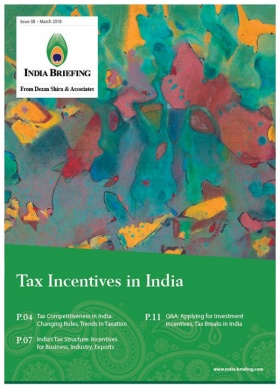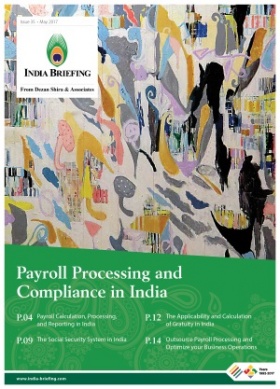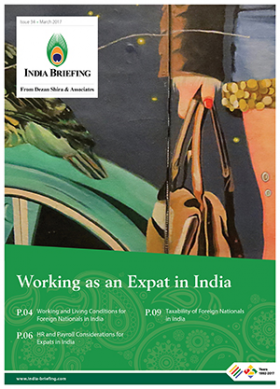The Sports Industry in India – Investment Prospects in Manufacturing, Retail, and Training
The love for sport in India is moving beyond the game of cricket towards a wide variety of sports, resulting in the growth of viewership, participation, and sports-related industries.
It has opened up new business opportunities for investors looking at the Indian market – from brand building and infrastructure to niche entrepreneurial ventures, emerging technologies, and services.
India’s improving economic climate, rising disposable incomes, and changing outlook towards fitness is fueling the increase in demand for sports-related goods and services.
Investment prospects in the sports industry are dispersed across the entire supply chain, including the manufacturing and retail of equipment and apparel as well as in advertising, talent management, and training.
Growth drivers for India’s sports industry
The Indian government has turned its attention to developing the sports sector as a strategy to create jobs, generate revenue, and attract investment into the country, aside from nurturing sports talent.
For 2018-20, the federal government set aside a US$262 million (Rs 1,756 crore) budget for its ‘Khelo India’ (Play India) program.
The Sports Authority of India, set up under the Ministry of Youth Affairs and Sports and the sport-specific National Sports Federation oversee this program.
Key features of the program are:
- A pan-India scheme to provide annual scholarships of US$7,350 (Rs 500,000) to 1,000 young athletes for eight years;
- Funding to 20 universities across the country to promote excellence in sports while pursuing education degrees;
- Providing maximum access to organized sports to college and school children;
- National fitness drive to measure and support fitness related activities for 200 million school going children;
- Set up and use of open-gyms in public parks;
- Use of technology, such as mobile apps, to promote sport and reach out to youth in rural or deprived areas of the country; and,
- A national talent search portal set up under the Sports Authority of India for talent identification and management.
A national committee to study sports governance was set up recently. It consists of reputable sports persons, sports marketing professionals, and leading sports brands along with government representatives.
Private sector involvement in sports governance is limited to deals associated with public-private partnerships for specific task-related tenders, such as stadium management or overhaul of facilities.
Sports goods and equipment manufacturing in India
Almost 60 percent of all sporting goods manufactured in India are exported, especially to international retail brands, such as Mitre, Lotto, Umbro, and Wilson.
India’s labor-intensive economy provides opportunities for manufacturing firms setting up here. Over 500, 000 people are employed in the sports retail and manufacturing sector alone, and potential for growth in employment and revenue for firms in this sector is rising.
Sports manufacturing is primarily centered in the north Indian states of Punjab and Uttar Pradesh, while the Indian states of Gujarat, West Bengal, and Tamil Nadu are developing hubs. The federal ‘Make in India’ scheme also greatly benefits manufacturing companies, providing various tax and location-based incentives.
Indian sporting goods are internationally accredited and respected. For example, the towels used for the Wimbledon or footballs used at various international tournaments – such as the Singapore Cup and the South Asian Football Federation Championship – are sourced from India, pointing to global market prospects for this subsector.
Retail market for sports equipment and apparel
French sports company Decathlon, the world’s largest sporting goods manufacturer and retailer, was the first multinational (MNC) entrant into the sports retail market in India.
Taking advantage of India’s FDI rules (100 percent under the government approval route at the time now made automatic), Decathlon were able to set up 60 stores across India.
Up to 30 percent of 5,000 products sold under their brand are sourced from Indian manufacturers. As first movers into this emergent market, they enjoy a dominant position and large revenues.
With growing demand for sportswear and sports equipment, as well as the sustained government and corporate push to promote sports in India, the sports retail segment has untapped potential.
Most manufacturers and retailers in India predominantly focus on equipment and apparel for cricket.
However, with the advent of new sporting leagues, this sector is seeing an increase in demand for other sports-related goods, such as badminton, football, and hockey aside from fitness wear and equipment.
Training and talent acquisition in India
Due to its diverse population and size, India needs a specialized mechanism for recruitment and talent search throughout the country.
While the government has set up schemes, such as ‘Khelo India’ for this purpose – there still exists a yawning gap in the market for talent acquisition experts and quality trainers.
Realizing the huge untapped potential, eminent Indian sportspersons have established training academies and centers – like the tennis player, Mahesh Bhupati’s Tennis Academy or Baichung Bhutia’s Football Schools, badminton players Prakash Padukone’s Badminton Academy and Pullela Gopichand’s Badminton Academy, among others.
However, financial sustainability due to a lack of funding and commercial structuring poses a problem and hampers the further growth of these institutes.
Private players can invest through direct involvement in the business aspect of such institutes or through an external approach – by providing sponsorships and gaining recognition through brand marketing.
Growth of Indian sporting leagues attract investors
The ongoing development of major sporting leagues, such as the Indian Premier League for cricket or the Indian Super League for football with their enthusiastic fan base, shows a promising future for sports and affiliated sectors.
Mainstream subsectors like manufacturing and promotion are bound to grow due to the increasing demand for quality sporting goods while India’s emerging appetite for varied sporting events creates budding options for investments into sports technology, services, marketing, and broadcasting.
Increasing private sector presence is shaping investment and collaborative practices in the Indian sports sector, which was too unorganized in the past to allow simple investment strategies.
Foreign firms such as the Chinese technology company, Vivo, and sports retail giants Nike and Adidas, are developing interest in niche sports like kabbadi, hockey, and football through sponsorships and funding – in turn leveraging brand recognition and advertising opportunities.
Future investors entering the Indian sports market will find navigating this sector easier due to federal incentives for this industry, and established working models and practices, by first-mover companies.
About Us
India Briefing is published by Asia Briefing, a subsidiary of Dezan Shira & Associates. We produce material for foreign investors throughout Eurasia, including ASEAN, China, Indonesia, Russia, the Silk Road, & Vietnam. For editorial matters please contact us here and for a complimentary subscription to our products, please click here.
Dezan Shira & Associates provide business intelligence, due diligence, legal, tax and advisory services throughout India and the Asian region. We maintain offices in Delhi and Mumbai and throughout China, South-East Asia, India, and Russia. For assistance with India investment issues or into Asia overall, please contact us at india@dezshira.com or visit us at www.dezshira.com.
- Previous Article US Exports to India Face Higher Tariffs after Trump Government Withdraws Concessions
- Next Article Internal Controls, Anti-Fraud Strategies for Companies in India
















